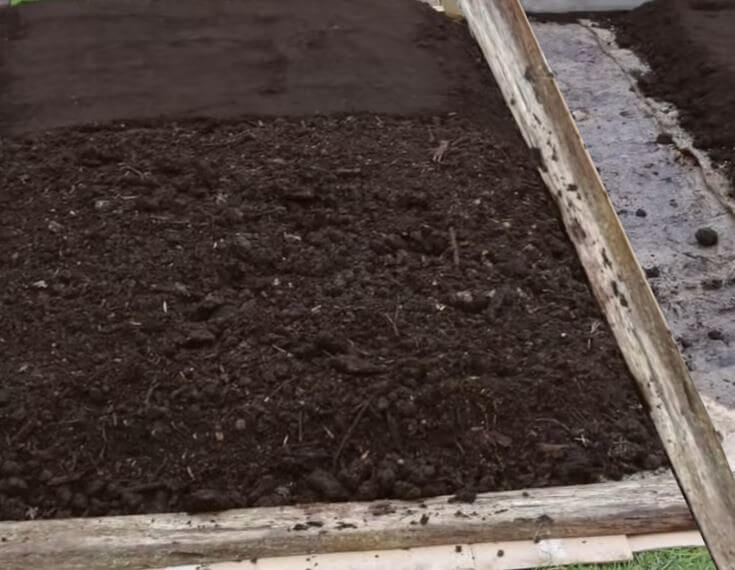No Dig Bed
We look at the practicalities of how we can create a no-dig bed. At the time of writing, most countries are in “lockdown” so starting with looking at the needs of a new gardener might be appropriate.
Different gardeners have different aspirations. The holistic style definitely suit the new gardener as they will have fewer preconceived ideas. And there is less digging which is popular with most beginners. Lets start with someone who wants to “have a go” at growing vegetables.
Converting a Lawn
There are many great YouTube videos on this but most assume existence of resources that a beginner would probably not have. The videos are usually made by experienced gardeners who might miss out some essential steps that are so obvious to them.
Okay the basic materials you would need are lots of compost (for a small bed) large plain (not glossy printed) cardboard and some lengths of scrap wood.
Just a note that if you or your gardener add lawn feed with included weed killer, you might not be successful in your endeavour, I’m sorry to say.


Now you have a simple bed that you can plant seeds or seedlings into. What happens is the compost will have enough nutrients to germinate the seeds and support the seedlings for some weeks. Meanwhile the cardboard and grass underneath will start to decompose and feed the soil by the action of the worms and other organisms. The roots of your seedlings will grow into the soil and in a few weeks you can start harvesting.
If this is your first foray into growing vegetables, buying seedlings is a better bet than using seeds. As you do not have bare soil exposed, cover crops are not needed. Just snip off any weeds that appear just under the compost surface. Doing this regularly will weaken the weed and it will give up. Don’t forget to water during dry spells, especially when you have just planted and also while the plants are young.
Converting a Dug Bed
If you have been digging your bed or maybe inherited one and want to start gardening holistically. The procedure to follow is very similar to converting a lawn. Except you’ve probably got bare soil or one that’s covered with weeds.
Starting with bare soil, just get a load of compost and lay it to 10 cm depth. If you are not going to plant in it immediately, sow some Blue Tansy (Phacelia Tanacetifolia) or other cover crop seeds on the compost. These plants will quickly start to improve the underlying soil. These plants can always be chopped off when you’re ready to plant. Keep all cover crop plants trimmed if they start to shadow your main crop.
If you’re starting with a weedy bed, what you do depends on the type of weeds. Strong weeds (like dandelions) or dense weeds will need a technique like in when you are converting a lawn with cardboard sheets (see above). Lighter patchy weeds will only need a few sheets of newspaper with 10 cm of compost on it.
If your bed for conversion is a raised bed it might be an advantage. This is if you have enough side wall depth to take the extra compost. If the bed is already full to the rim, mound up the compost so that the middle of the bed has more than 10 cm depth. Of course, if you are really keen, you can undertake some structural alterations too.
Some Hints
In any case, you would be best to avoid long root crops like carrots or parsnips. Your first year of planting may not yield brilliant vegetables but just wait till next season! I found that I got a very reasonable crop out of a first-season converted dug bed with Swiss chard, peas, spinach, lettuce, cabbage and spring onions. I’m still waiting to see the result for beetroot but the plant itself is looking strong. The other benefit I am already seeing are fewer slug damage on the plants.
Do try and start your seeds indoors or in a warm place. A heated mat would be great. Or buy your seedlings as garden centres would have done the hard initial work for you! Ebay is a good place to buy seedlings too - just make sure the seller has good feedback.
The first season results will also depend upon when you last dug the bed prior to conversion. If the last dig was six or more months ago, you will see great improvements as the warmth of spring hits your plants. The soil would have had those many months to recover from the last “abuse”. Any surface weeds would also have improved the soil microorganisms and kept them alive. Don’t forget, a plant-less bed is a dead one!